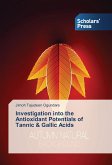The biophysics of excitable membranes and extracellular potential .fields emerged at the end of the 18th century, together with electrophysiology. and has been used ever since as a basis for the development of electrophysiological 'tnvestigations. This holds true even for the contemporary stage of initial discoveries concerning the molecular mechanisms of membrane excitability. The biophysics of ionic channels has gradually revealed the genesis of the ionic currents and of the biopotentials in ditIercnt excitable structures. On the basis of electrodynamics, the extracellular potential fields in the living body. ~nsidcred as a volume conductor, have been studied intensively. The knowledge accumulated constitutes the theoretical basis for interpretation of the electrophysiological data. Over a period of more than 15 years a group of Bulgarian investigators led by A. Gydikov has systematically studied the dependence between the intra- and extracellular potentials of the skeletal muscles. The present book summarizes these investigations known in many countries. Using a great amount of factual material from experiments and model investigations on the skeletal muscle potentials, the author considers: a) the extracellular potential field of single skeletal muscle fibres and their dependence on the parameters of intracellular action potentials, the geometric parameters ofthe fibres.and ofthe volume conductor; b) the potentials of single motor units; c) the compound and reflex muscle potentials, and d) the interference electromyogram.
Hinweis: Dieser Artikel kann nur an eine deutsche Lieferadresse ausgeliefert werden.
Hinweis: Dieser Artikel kann nur an eine deutsche Lieferadresse ausgeliefert werden.








